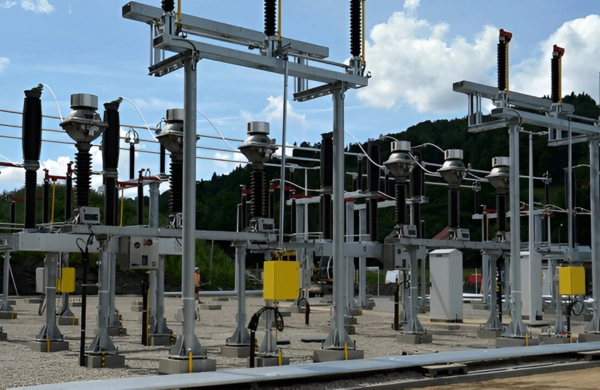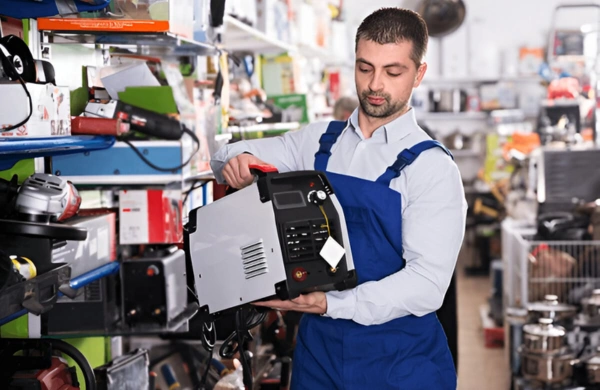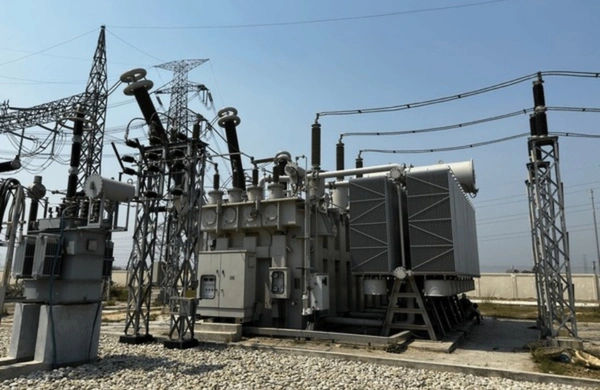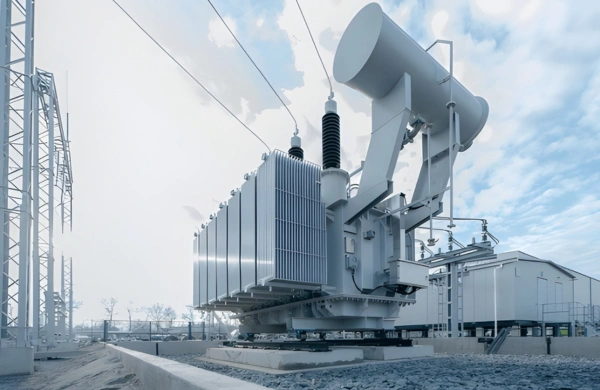Introduction
As North America expands its electrified rail and metro infrastructure, the demand for reliable and efficient power systems has grown significantly. Central to these systems are traction substation transformers, which convert high-voltage grid power into the lower voltages required by railway catenary systems, third-rail supplies, and auxiliary loads.
Know About Traction Substation Transformers Powering Rail Electrification
Designed for continuous operation under fluctuating loads, traction transformers ensure safe and efficient power delivery to locomotives, signaling systems, and station facilities.
Zetwerk manufactures high-performance traction substation transformers engineered for the demanding operational environments of rail and metro systems. Built to IEC 60310, IEEE C57.12, and EN 50329 standards, Zetwerk’s transformers deliver precision voltage control, thermal resilience, and reliability essential for modern rail electrification networks.
1. The Role of Traction Substation Transformers
In electrified railway networks, substations are the interface between the public utility grid and the traction power supply system. Traction substation transformers step down grid voltage — typically 110 kV, 132 kV, or 220 kV — to the lower voltage levels used by the overhead catenary (e.g., 25 kV AC) or third-rail systems (e.g., 750 V DC).
Core functions include:
- Voltage conversion between grid and traction systems.
- Power supply for locomotives, stations, and auxiliary systems.
- Electrical isolation between traction and utility networks.
- Fault protection and short-circuit withstand capability.
Zetwerk’s traction transformers are designed to withstand dynamic loading, harmonics, and mechanical vibration associated with railway operations, ensuring consistent performance and minimal downtime.
2. Design and Construction Excellence
Traction transformers operate in some of the most demanding electrical and environmental conditions. Zetwerk designs each unit with reinforced insulation, robust mechanical construction, and advanced cooling systems to ensure uninterrupted service.
Core:
Made from grain-oriented CRGO steel or amorphous metal, the core provides low magnetizing losses and high mechanical stability. Step-lap construction minimizes noise and ensures uniform flux distribution.
Windings:
Copper or aluminum windings are precision-wound with reinforced insulation to withstand voltage surges and traction harmonics. Windings are braced to handle frequent short-term overloads and mechanical stress.
Insulation System:
High-grade insulation materials such as Nomex, epoxy, or oil-impregnated paper ensure dielectric reliability under transient conditions.
Tank and Enclosure:
- Fully sealed, welded steel tanks with anti-corrosive coatings.
- Pressure relief devices and oil-level indicators for safety.
- Optional stainless-steel or galvanized finish for coastal or tunnel installations.
Cooling Options:
Depending on duty cycle, Zetwerk provides ONAN, ONAF, or OFAF cooling systems to manage thermal loads in high-temperature environments.
3. Electrical and Mechanical Performance
Zetwerk’s traction substation transformers are engineered for high efficiency, voltage stability, and mechanical durability under heavy cyclic loads.
Typical specifications:
- Power range: 2.5 MVA to 100 MVA
- Primary voltage: 110 kV / 132 kV / 220 kV
- Secondary voltage: 25 kV (AC) / 1.5 kV or 750 V (DC equivalent systems)
- Frequency: 50 Hz / 60 Hz
- Efficiency: ≥99.2%
- Cooling type: ONAN / ONAF / OFAF
- Thermal class: F or H
- Insulation level: BIL up to 1,200 kV
Each transformer undergoes electrical simulation and finite element thermal analysis (FEA) to ensure stable operation under traction duty cycles characterized by frequent load variations.
4. Application in Rail Electrification Networks
Zetwerk’s traction substation transformers are used across various electrification systems and infrastructure projects:
a) AC Electrified Systems (25 kV):
- Common for intercity rail and metro systems.
- Reduces transmission voltage (110–220 kV) to 25 kV AC for overhead catenaries.
- Provides efficient long-distance power transfer with low losses.
b) DC Traction Systems (750 V–1.5 kV):
- Used in metros, trams, and light rail systems.
- Step-down supply for rectifier units feeding DC rails.
c) Auxiliary Power Supply:
- Supplies voltage for station lighting, HVAC, signaling, and maintenance depots.
Zetwerk custom-engineers each transformer for specific traction system configurations, ensuring compatibility with substation protection, switchgear, and SCADA systems.
5. Mechanical Strength and Dynamic Load Performance
Traction transformers are exposed to frequent load fluctuations caused by train acceleration and braking. This cyclic loading generates thermal and mechanical stress that can degrade conventional transformers over time.
Zetwerk addresses this with:
- High short-circuit strength windings.
- Reinforced clamping structures to prevent coil deformation.
- Optimized oil circulation for fast heat dissipation.
- Vibration-resistant mounting for stability in tunnel and substation environments.
These design enhancements ensure continuous operation under demanding railway service conditions.
6. Testing and Quality Standards
Every Zetwerk traction transformer undergoes extensive type and routine testing to ensure it meets international performance and safety standards.
Testing scope includes:
- Ratio, polarity, and impedance testing.
- No-load and load loss measurements.
- Impulse and dielectric strength tests.
- Temperature rise and hot-spot evaluation.
- Short-circuit withstand and mechanical strength tests.
- Noise and vibration level testing.
All tests comply with IEC 60310, IEC 60076, IEEE C57.12, and EN 50329 standards.
Each transformer is supplied with complete FAT documentation and quality traceability for utility and EPC projects.
7. Safety, Reliability, and Environmental Compliance
Safety and reliability are critical in traction substations, where equipment operates in proximity to personnel and public areas.
Safety features include:
- Buchholz relays and pressure relief devices for fault protection.
- Oil and winding temperature sensors for thermal monitoring.
- Anti-vibration pads and seismic anchoring.
- Arc-resistant enclosures for high-voltage installations.
- Fire-retardant coatings and insulation materials.
Environmental compliance:
- Use of biodegradable natural ester oil as an alternative to mineral oil.
- Low-loss core design minimizing energy waste.
- Fully recyclable metals and insulation materials.
- Compliance with RoHS and REACH directives.
Zetwerk’s transformers ensure safe, sustainable, and reliable power delivery under the toughest operating conditions.
8. Smart Monitoring and Predictive Maintenance
Modern rail networks require real-time data for efficient asset management. Zetwerk’s traction transformers can be equipped with digital monitoring systems that provide continuous performance insights.
Monitoring features:
- Oil temperature and moisture monitoring.
- Load current and voltage profiling.
- Partial discharge detection.
- Tap changer position and contact wear analysis.
- SCADA and IoT connectivity using IEC 61850 or Modbus protocols.
Predictive analytics support condition-based maintenance, helping operators reduce unplanned downtime and extend equipment lifespan — a critical advantage for 24/7 rail networks.
9. Zetwerk’s Manufacturing and Engineering Excellence
Zetwerk maintains total control over transformer design, materials, and testing to ensure world-class quality and consistency.
Manufacturing capabilities:
- CNC-driven core cutting and stacking for low losses.
- Automated winding and vacuum drying for insulation stability.
- Oil filtration and degassing systems for high dielectric strength.
- Factory Acceptance Testing (FAT) with full digital recording.
- ISO 9001, ISO 14001, and ISO 45001-certified processes.
Engineering capabilities:
- Design compliance with IEEE, IEC, and AREMA traction power standards.
- Custom tap changer configurations and auxiliary windings.
- Modular installation design for quick commissioning in urban or remote sites.
Zetwerk’s engineering teams collaborate with EPCs and transit authorities to deliver project-specific traction transformer solutions optimized for performance and reliability.
10. Supporting North American Rail Electrification
As North America accelerates rail electrification and urban transit expansion, Zetwerk is positioned to support this transformation with its manufacturing and engineering expertise.
Key strengths:
- Proven track record in supplying traction and substation transformers for metro and mainline projects.
- Compliance with IEEE, IEC, EN, and CSA standards.
- Export-ready documentation and factory testing for U.S. and Canadian utilities.
- Scalable production capacity for large-volume orders.
- Reliable delivery timelines and lifecycle support.
From heavy rail to light metro systems, Zetwerk provides the transformer solutions essential to powering efficient, low-carbon transportation infrastructure.
Conclusion
Rail electrification demands transformers that can deliver consistent, efficient, and safe power in challenging operating environments. Traction substation transformers play a critical role in ensuring the stability and performance of modern rail and metro systems.
Zetwerk manufactures robust, energy-efficient traction transformers built for long service life, mechanical endurance, and high electrical performance. Engineered for heavy-duty operation and environmental resilience, each transformer undergoes comprehensive testing and digital validation to ensure reliability in mission-critical rail applications.




By combining advanced materials, automation, and engineering excellence, Zetwerk continues to power North America’s journey toward modern, sustainable, and electrified transportation.
FAQs
a. It converts grid voltage into suitable levels for rail electrification systems, powering trains and auxiliary equipment.
a. They comply with IEC 60310, IEEE C57.12, EN 50329, and CSA standards.
a. In railways, metros, and light-rail substations for AC and DC electrification systems.
a. ONAN, ONAF, and OFAF cooling systems are available based on capacity and duty cycle.
a. Yes. Zetwerk offers IoT-enabled monitoring for real-time diagnostics and predictive maintenance.








